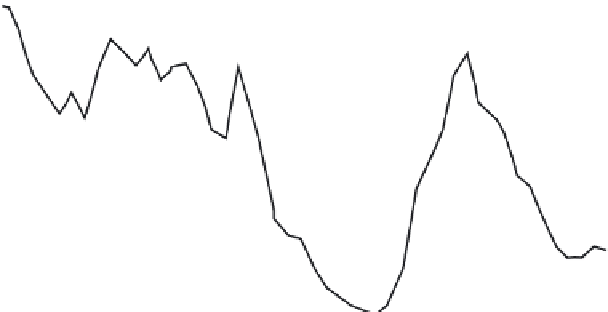Environmental Engineering Reference
In-Depth Information
100
80
60
40
20
P forecast
P measured
0
0
6
12
18
24
30
36
42
48
Look-ahead time (h)
Figure 6.25
Example of forecast with uncertainty information
estimation of the reliability of the forecast, which because of changes in atmo-
spheric predictability varies from day to day and from region to region (Kalnay
et al.
, 1998). Ensemble forecasting involves producing an ensemble of forecasts
instead of just an individual forecast. The members of the ensemble can arise from
different variants of the same NWP model, e.g. different physical parameterisation
of the sub-grid physical processes, or different initial conditions, or different data
assimilation techniques; or they can arise from completely different NWP models.
The technique of ensemble forecasting has recently been applied to wind power
forecasting. The basic assumption is that when the different ensemble members
differ widely, there is a large uncertainty in the forecast, while, when there is closer
agreement between the ensemble member forecasts, then the uncertainty is lower
(Giebel, 2005). A multi-scheme ensemble prediction scheme (MSEPS), which was
originally developed at University College Cork, has been implemented at Ener-
ginet (the TSO in western Denmark) in co-operation with the research company
WEPROG. It consists of 75 ensemble members produced by perturbations of the
initial conditions and variations in the parameterisation of selected physical
processes. The results for the first year's trial are quite promising, with at least
20 per cent better forecasts of wind power compared to a single forecast averaged over
the year. In addition, periods with high wind power output (defined as
>
70 per cent
rated) and low uncertainty were predicted accurately up to two days ahead, while
periods with low wind power and low uncertainty were also predicted accurately
(Akhmatov
et al.
, 2005). The MSEPS has also been applied in Ireland for a four-
month test period to both a single wind farm of 15 MW capacity (Lang
et al.
,
2006a) and the aggregated output from the wind farms connected to the Irish TSO

























































































































Search WWH ::

Custom Search